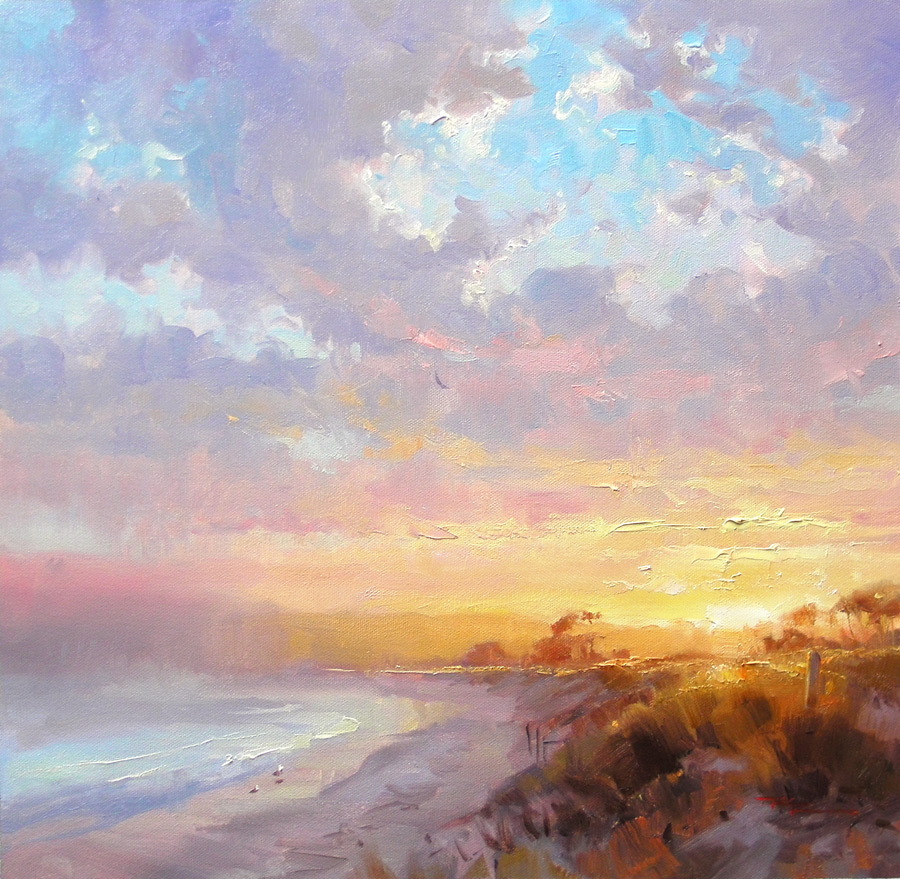
Enjoy this free chapter from the Mastering Sunsets Course.
...but for painters like us they're particularly beautiful because they inspire us to paint them, so we're lucky in that way, but also unlucky, because sunsets can be very tricky to paint. Anyone can paint a sunset, but how can we paint them really WELL?
The first thing we get wrong is the values. Values are particularly tricky with sunsets because sunsets often have some very high chroma colors in them and we tend to see high chroma colors as having higher value than they actually have and low chroma colors as having lower value than they actually have.
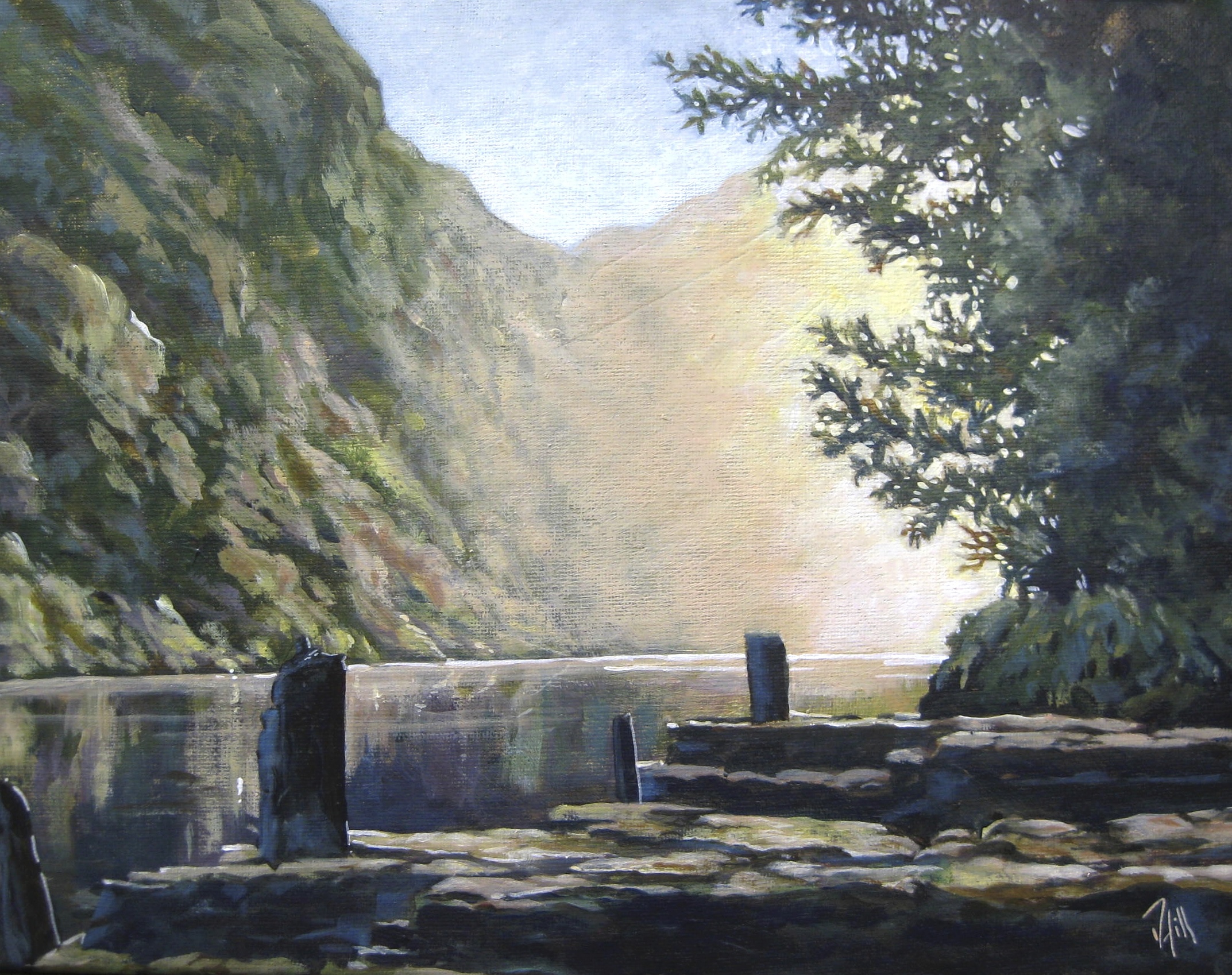
Using too much white to lighten can result in chalky color.
“Glendalough, Early Morning” - Acrylic 11x14” by Deb Hill
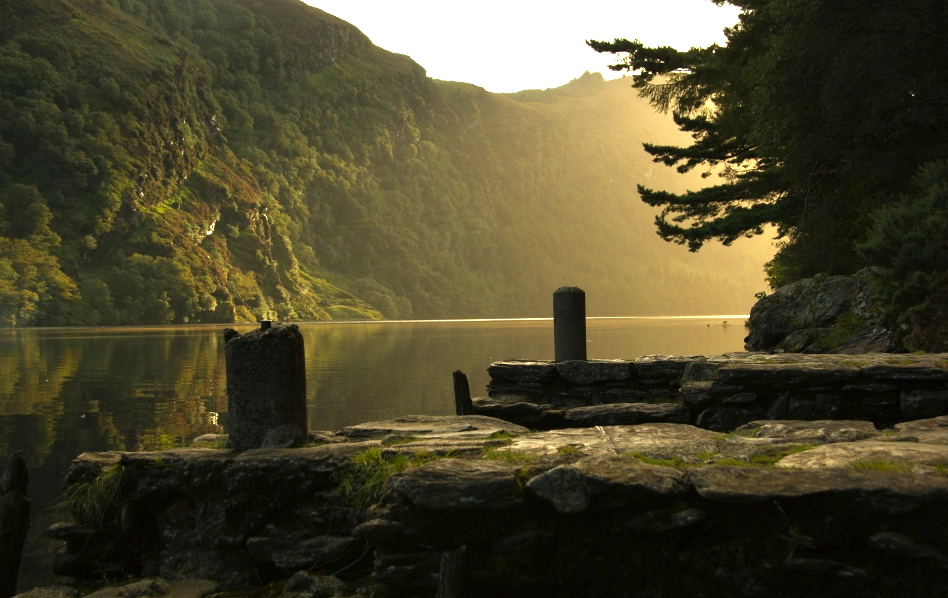
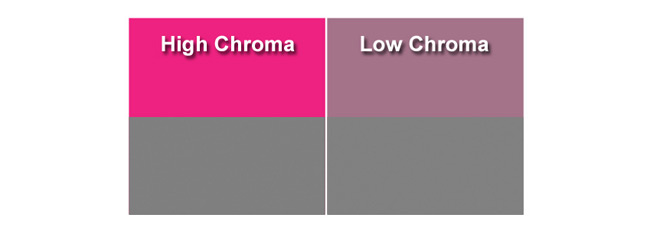
Chroma affects our value perception. We see high chroma as lighter and low chroma as darker.
These two swatches have the same value, but see how the high chroma appears to be lighter than the other? This means that when we are painting a sunset we will tend to paint the intense warm colors a little lighter than they actually are, which will make them look a little chalky as we add more white to raise their value. What that means for us practically is that we need to hold off using our lightest value (which may not necessarily be white) till the last possible moment as in this painting by Albert Bierstadt.
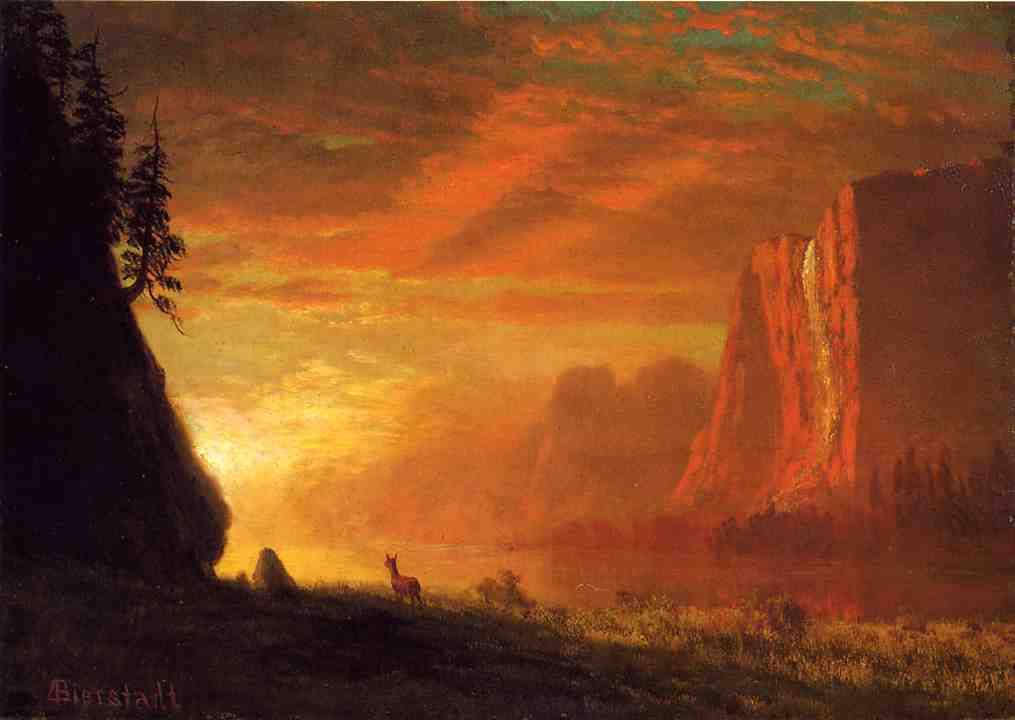
Save your white (if at all) right till the very last moment.
“Deer at Sunset” Oil on paper 19.5 x 14” by Albert Bierstadt.
Also, one might think that adding a ‘bright’ red to a sunset will make it more vibrant, but in fact red has a fairly dark value which can often look out of place amongst the other light values there.
.jpg)
Painting from our ‘symbols’ tends to lead to over- saturated, simplified color.
“Sunset” by Roy H. Scott.
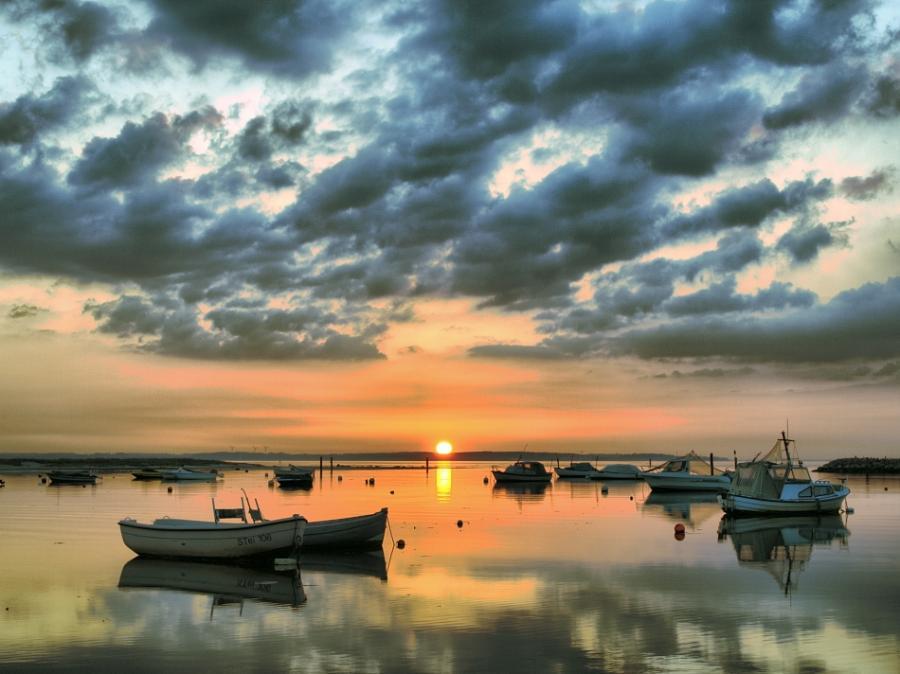
Image courtesy: http://pixdaus.com/single.php?id=42456
Painting light is more about painting gradients than anything else. Each little section of sky you might look at always has at least two gradients happening within it. The sky gets lighter towards the horizon which gives us a
vertical linear gradient and it also gets lighter and warmer
towards the sun, which gives us a second overlapping radial gradation. Being aware of that is crucial to painting believable skies.
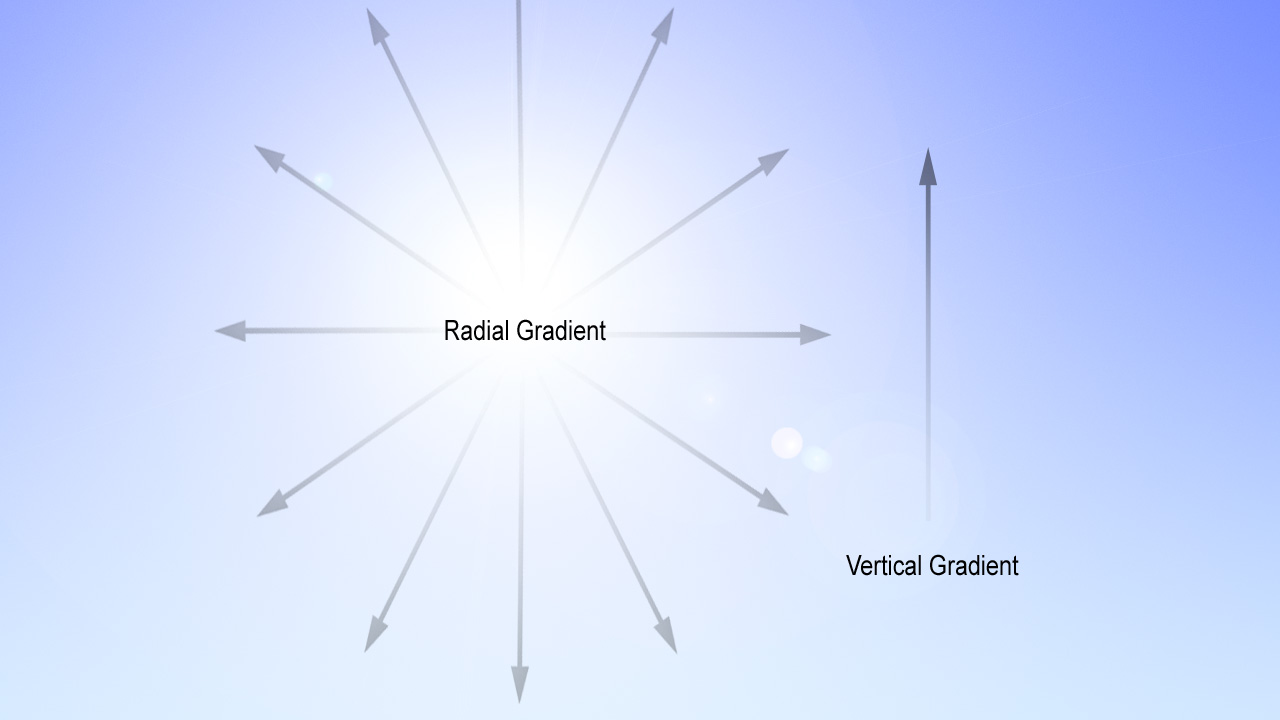
Every piece of sky contains 2 gradients - 1 radial, 1 linear.
Sunsets can be a prime example of the general painting guideline that "warm light makes cool shadows" and vice versa. Clouds that are fairly neutral in color during the middle of the day can display dramatic color compliments during a sunset - bright orange where they are touched by the sun and deep blue on their shadow sides. Yellow and violet is the other common complimentary color scheme in sunsets.
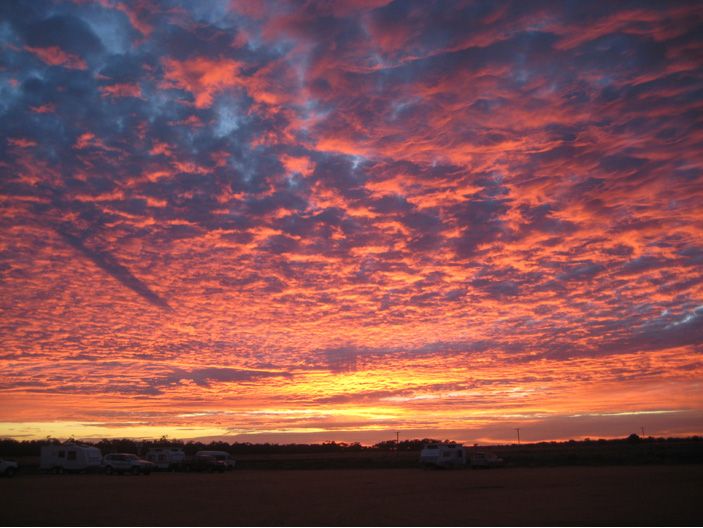
‘Australian Outback Sunset’. Photo by Kerry Heffernan
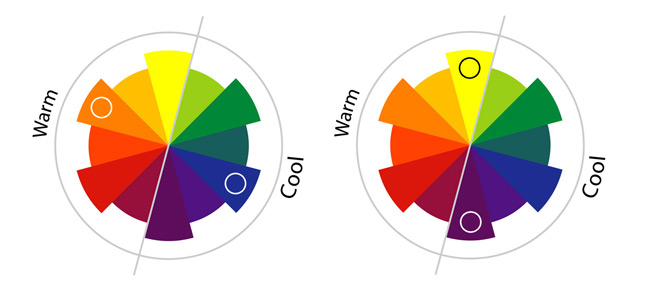
Sunset clouds often display color complements - oranges and blues, yellow and violets.
Something else we tend to get wrong is to oversaturate our colors, making them look too gaudy. There are two reasons for this. The first reason is that our eyes are being tricked into thinking things are brighter and more saturated than they actually are. How's that? Well, the usually warm bright colors in a sunset cover a fairly small area compared to the larger, darker and cooler sky, which makes the light area look lighter, warmer and more highly saturated than it really is. Conversely, that bright warm light makes the cool darks look cooler and darker by comparison.
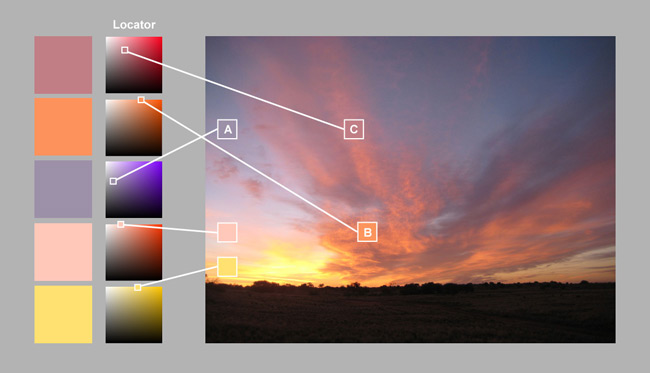
Sky colors are usually not as vibrant as you might think.
In the color locators taken from this photo, the further the color point is from the top right of each locator, the more gray the color has in it (lower chroma). Notice how the blue of the sky in position A is actually very nearly gray. Notice too how much grayer and darker the orange cloud is in position C than it is in position B. It’s very easy to make these grayer colors too vibrant in a painting, which often tends to take away from the beauty of the sunset rather than adding to it.

”Florida Sunrise 2” 8x16” Acrylic by Peni Baker.
This is a striking image, however the blue sky seems too blue to me - it might look better a little warmer and grayer.

The second reason we oversaturate our colors is that we all tend to paint from our current understanding of a subject (our symbols) than from what the subject really looks like. Skies are one of the first things we paint as children, using LOTS of BRIGHT BLUE!
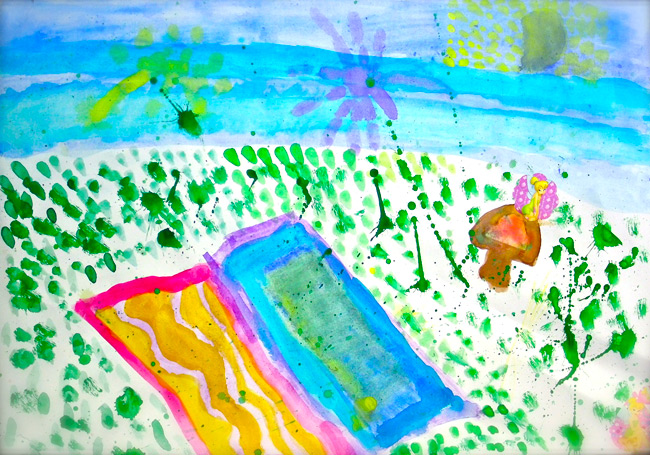
“Fireworks at the Park” Watercolor by Danielle Robinson (Age 6).
Our painting ‘symbols’ show our current understanding of a subject.
So we have that symbol in our head to overcome when we come to paint a sky as adults. The sky is usually not as high in chroma as we think it is, and the same goes for sunsets. So what does all that mean practically? Just that sunsets overall are a bit grayer than they look and with not quite as much contrast as you'd think either, and if we want to paint them really well we need to stop painting our symbols and get outside and really analyze those colors.
Where would a sunset be without clouds? Sunsets seem to be a little boring without them - they really add all the drama to the scene. Without them a sunset is just a big gradation of color - a big beautiful one which is very soothing to look at, but it's not something we really get excited about. Often beginner painters will avoid painting clouds because of the added complexity but it's when the clouds almost seem to catch on fire that we run outside to see it and parents around the world hold their children up for a better view.
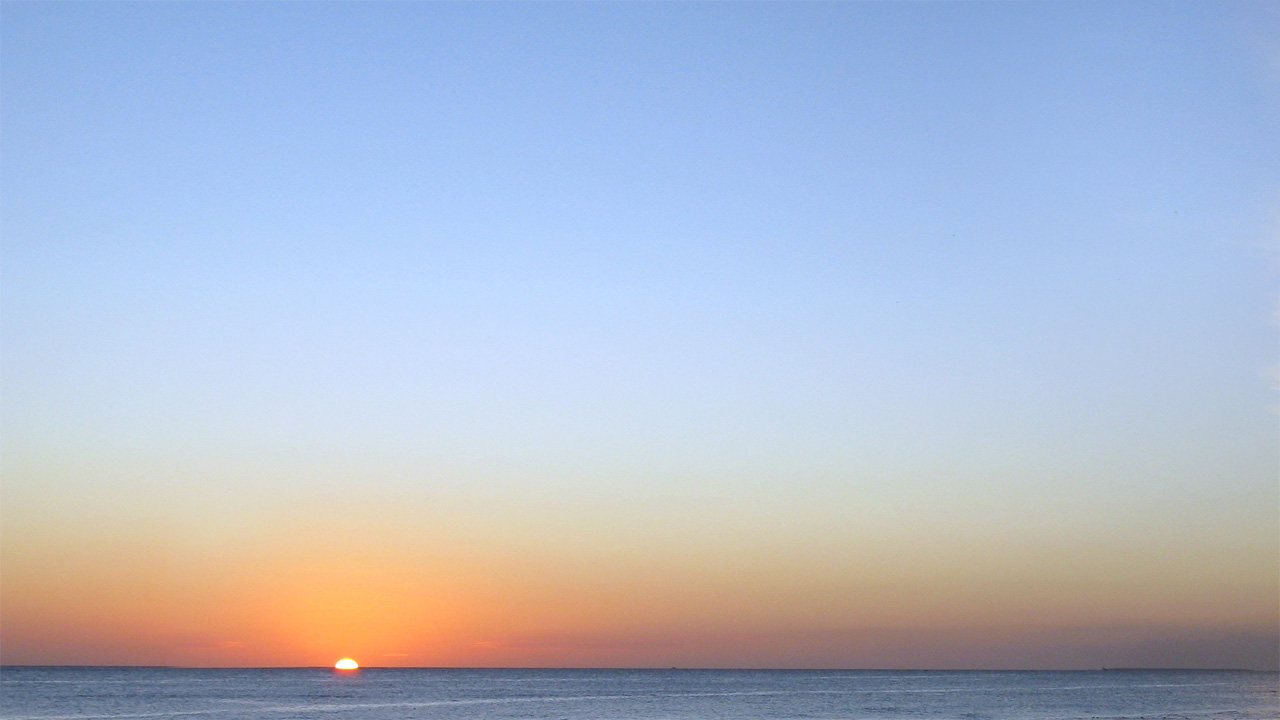

‘Australian Outback Sunset’. Photo by Kerry Heffernan
For the painter, clouds can bring a sunset to life, but they can also very quickly get out of control and muddy all the colors in your sky. The reason is that when you mix warm colors with cool colors you are instantly graying or muddying those colors.
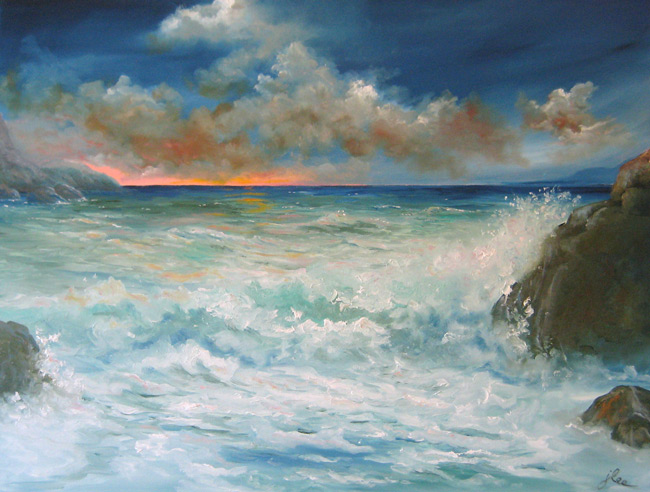
“Sonoma Coast Sunset” 24x36” Oil by Jackie Lee. Warm/cool color variations in clouds make it all too easy to make mud.
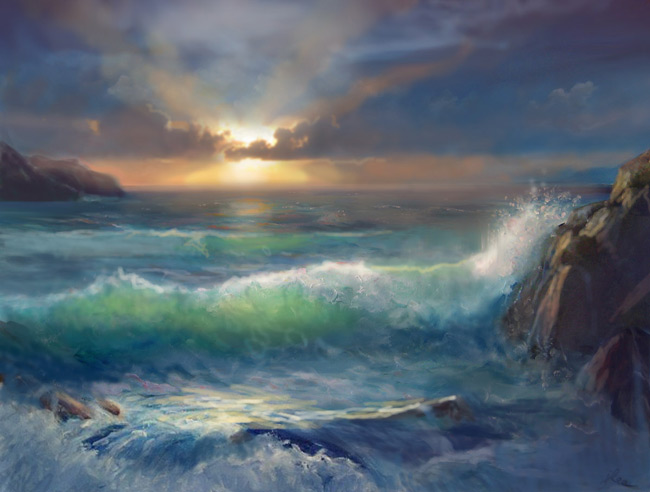
My photoshopped version.
In the Mastering Sunsets Course you'll learn how to avoid making mud.
Those are some of the things to look out for when you’re painting sunsets and you’ll see all those in action in the painting projects in the Mastering Sunsets Course.
Happy Painting,

Richard.
Login to your account to post a comment.